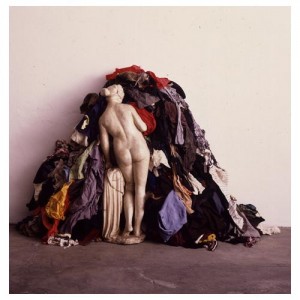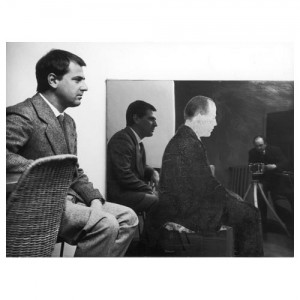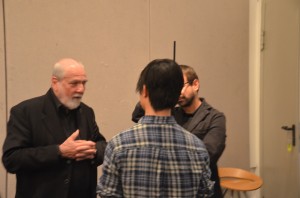Shara Wasserman, our professor of Modern Art in Italy and Stan Taft, the art studio professor, arranged for artist Michelangelo Pistoletto to come and speak to the Cornell Community on Tuesday April 19th. This event was well attended by both Cornell in Rome students and staff as well as members of the community and students from other study abroad programs.
This particular event was incredibly exciting for Cornell because of the prolific accomplishments of Pistoletto as one of Italy’s foremost contemporary artists. Pistoletto has shown in museums around the world and his exhibition of his mirrored and reflective paintings, installations and other art is currently being shown at the MAXXI museum of contemporary art here in Rome.
Pistoletto was a pioneer of the Arte Povera movement in Italy in the late 1960s. In this contemporary art style, many artists were using materials of “poor” quality, mostly common things that anyone could find. Pistoletto’s primary example of this is Venus of Rags. It is a copy of an ancient sculpture holding up a pile of clothing provided by his viewers, as a sort of interactive sculpture. This particular sculpture has appeared a number of times in our exploration of modern art in Italy and has many variations.

The artist began his presentation by discussing his intrigue with reflection, a path of investigation which led him to use gold and silver reflective surfaces as his paintings’ backgrounds. He transitioned into varnished black backgrounds and then later into polished stainless steel. A lone figure or a group of figures were painted onto these polished panels. The viewer is both the figure’s company as well as an onlooker.

Pistoletto went on to speak about the concept of self-portraits, and that in many cases a self-portrait is a very lonely figure centered on the canvas. By using a reflective surface, the artist becomes surrounded by the company of his admirers.
As students of art, Shara’s class opened our eyes to the artistic community here in Rome and to a greater understanding of the artistic process of which Pistoletto spoke. Pistoletto described a striking element in his work by using a quote:“When a work is done, it is no longer a possibility, but a realization.” Throughout the semester, the art students have been working on self-guided continuous projects. One exercise we had to do was to take down all previous work and put it away so that we could only focus on the most pressing matters. In my opinion, this kind of cleansing is exactly what Pistoletto was referring to. Once something is done, it is realized and complete no matter what it is, and the artist moves on.

